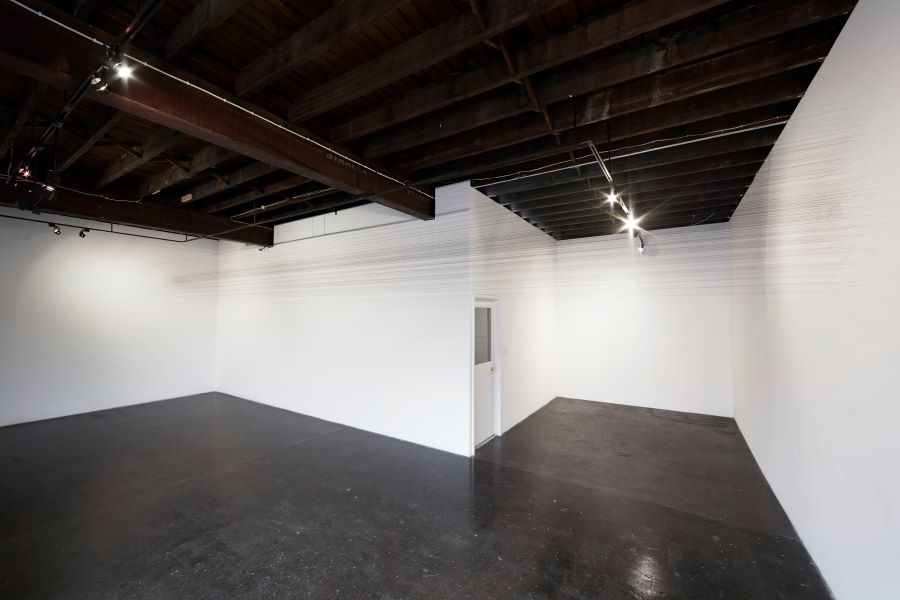Duyshart communicates her interest in vibration as a physical and psychological element that is sometimes unnoticeable and underestimated for its destructive qualities.
Image: Sarah Duyshart, Transmit, 2014, installation view.
SARAH DUYSHART (VIC)
Responding to the architecture of functional and non-functional spaces, Sarah Duyshart’s practice is an intuitive investigation into charting the physical and psychological tension innate to space and in relation to its viewer. Utilising a range of media to respond to unique masses, Duyshart’s site-responsive work spawns large meditative sound and sculptural installations that translate the immaterial within the material.
Duyshart composes audible and spatial scores via the recording of ‘ephemeral strata’ from the common and mundane. The artist combines rhythmic pulsating micro-sounds and the sub-audible to form meditative and captivating compositions which galvanise the physicality of each element within the work. The assembled environment seeks to examine our relationship with built and unbuilt landscapes through the physical and psychological bond affected by constructive and deconstructive processes.
Sift, 2013, a multisensory sound-activated sculpture and installation piece, harnesses audio and movement in a meditative response to the functionality and ‘life’ of an abandoned brick factory and town hall. Through the recording and subsequent recoding of industrial resources, squeaky chamber chairs, and unwarranted inhabitants (pigeons, etc.), Duyshart produces a sonic map of the architecture’s being. The final presentation consists of a suspended black sieve that employs the vibration of the artist’s score to sift flour onto the gallery floor— a visual exemplification of an aural landscape as well as a palpable moment of ephemerality as the flour travels from the ceiling to the floor.
Various material culture theorists assert that vibration theory has played a longstanding role in our ‘material thinking’—a concept that claims to collapse the distinction between subject and object. Further to this, vibration—which is neither thing nor matter—has the capability of actively engaging and indeed moving through subjects and objects, therefore acting as a bridge between internal and external worlds. Although not at the crux of her practice, this theory does hold important relevance in Duyshart’s current (and future) research, conceptualising resistance between boundaries and thresholds in search of creating intimate spaces that permeate the transformative.
The presence of the viewer is an important component in reading Duyshart’s practice. Transmit, 2014, is an example of the artist’s work that positions the viewer as a central and active partaker in the piece. Five hundred vibrating wires—seven kilometres in total—puncture opposing gallery walls, passing horizontally through the gallery above head height. The created ‘force-field’ of wires hums and vibrates whilst interfering with the gallery’s architecture and the viewer’s perception of the space. Here, Duyshart communicates her interest in vibration as a physical and psychological element that is sometimes unnoticeable and underestimated for its destructive qualities. Transmit is a perplexing installation that pits the viewer at odds with the ‘white cube’ experience, encouraging sensory communication as opposed to a purely visual one.
Duyshart’s extensive research and complex multidisciplinary practice encapsulates a number of artistic and constructed processes. Drawing—in parallel with Duyshart’s sound field recordings—investigates ‘the line’, forming another important component in her articulation of space, landscape and architecture. By marveling in the varied reconfigurations of ‘ordinary’ environments, her work is a true exploration of the current cycles in material thinking.
Text by Rayleen Forester, independent curator and arts writer, Adelaide.
Artist's website: www.sarahduyshart.com

